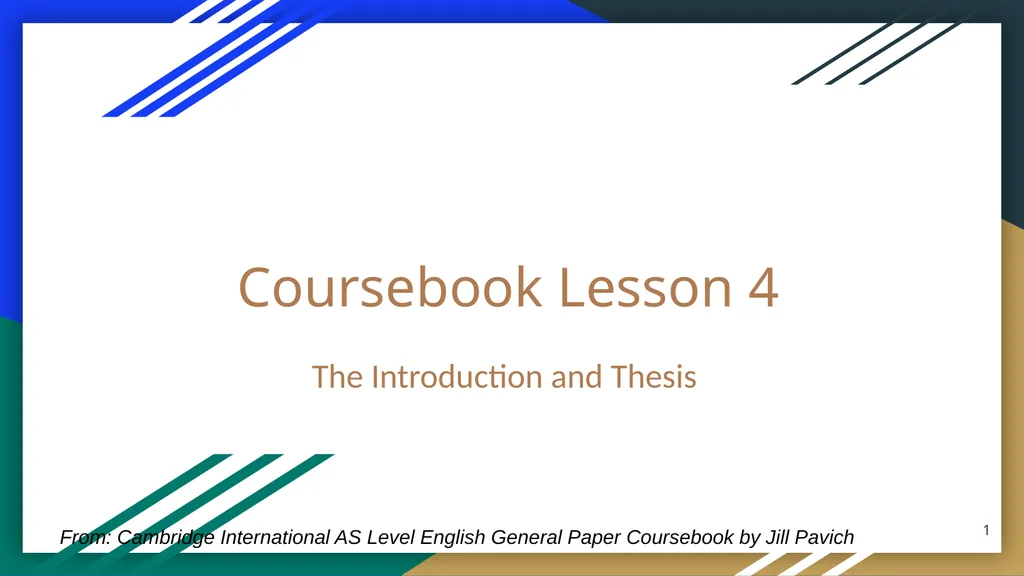
Author : tawny-fly | Published Date : 2025-05-22
Description: Coursebook Lesson 4 The Introduction and Thesis From: Cambridge International AS Level English General Paper Coursebook by Jill Pavich Key Elements of an Essay We have discussed the two types of essays in AICE EGP, argumentative andDownload Presentation The PPT/PDF document "" is the property of its rightful owner. Permission is granted to download and print the materials on this website for personal, non-commercial use only, and to display it on your personal computer provided you do not modify the materials and that you retain all copyright notices contained in the materials. By downloading content from our website, you accept the terms of this agreement.
Here is the link to download the presentation.
"Coursebook Lesson 4 The Introduction and Thesis"The content belongs to its owner. You may download and print it for personal use, without modification, and keep all copyright notices. By downloading, you agree to these terms.













